Yes, in some cases you can use a smaller blade on your circular saw, but it depends on the specifications of your saw and the blade. Generally, it’s recommended to use the size of blade that matches the saw, as using a smaller blade can result in lower cutting depth and poorer performance.
Using a smaller blade can also result in safety hazards, as it may cause the motor to overheat or the blade to break. It’s important to always follow the manufacturer’s recommendations for blade size and use. By doing so, you can ensure optimal performance and safety when using your circular saw.
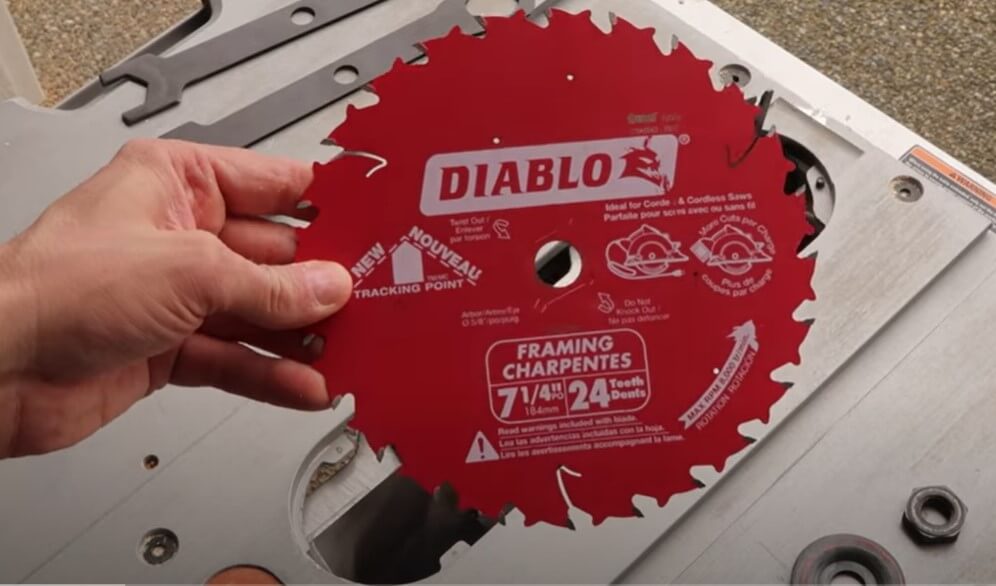
Understanding Your Circular Saw Blade
Circular saws are powerful tools that can handle a wide range of cutting jobs, but understanding how to use them properly is essential for maximizing their performance and safety. One important aspect of using a circular saw is understanding its blade.
Parts Of A Circular Saw Blade:
A circular saw blade consists of several parts, including:
- Tooth: The pointy edge that does the cutting
- Gullet: The space between teeth that allows for chip removal
- Kerf: The width of the cut made by the blade
- Plate: The body of the blade that supports the teeth
- Arbor hole: The hole in the center of the blade that fits onto the saw’s arbor
- Expansion slots: The cuts in the blade that reduce heat buildup and noise
Understanding the various parts of a circular saw blade can help you choose the right blade for your cutting needs.
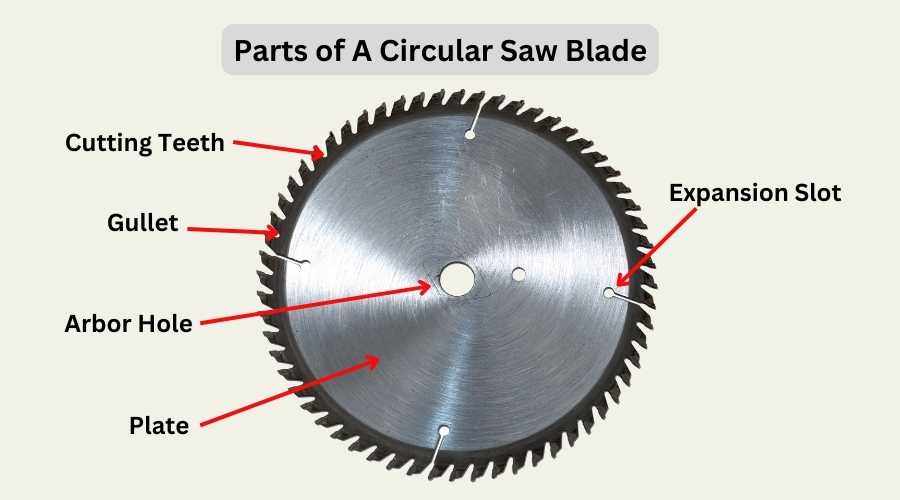
How To Measure Your Saw Blade:
Before buying a new saw blade, it’s essential to measure the old one to ensure that the new blade will fit correctly. To measure your saw blade, follow these steps:
- Turn off and unplug the saw before removing the blade.
- Use a wrench to loosen the arbor nut and remove the blade.
- Measure the blade’s diameter (from one end to the other).
- Measure the arbor hole’s diameter (the center hole).
- Count the number of teeth on the blade.
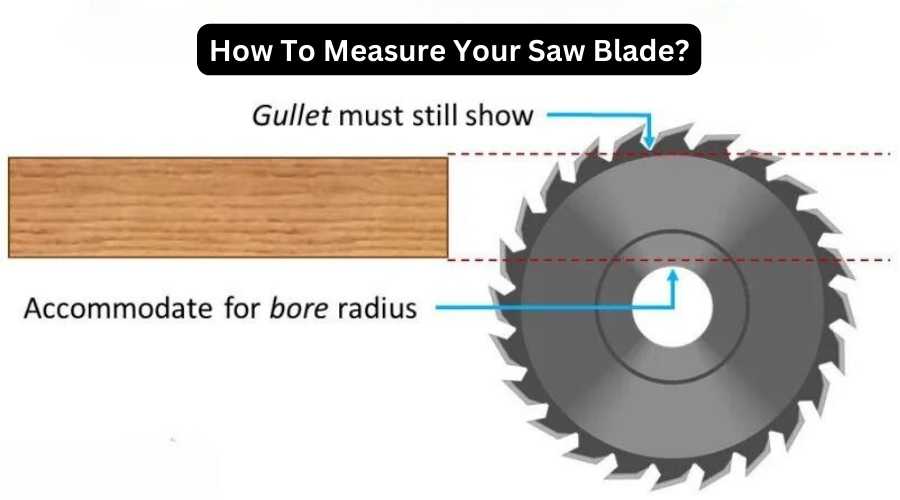
Types Of Circular Saw Blades Available In The Market:
There are various types of circular saw blades available in the market, including:
- Rip blades: These blades have fewer, larger teeth designed to cut with the wood grain.
- Crosscut blades: These blades have more teeth and produce a smoother cut against the wood grain.
- Combination blades: These blades combine features of rip and crosscut blades to offer a versatile option.
- Plywood/finish blades: These blades have many fine teeth and are suitable for cutting veneer, plywood, and other sheet goods.
- Diamond blades: These blades have diamond particles embedded in them and are used for cutting hard materials like concrete, tile, and stone.
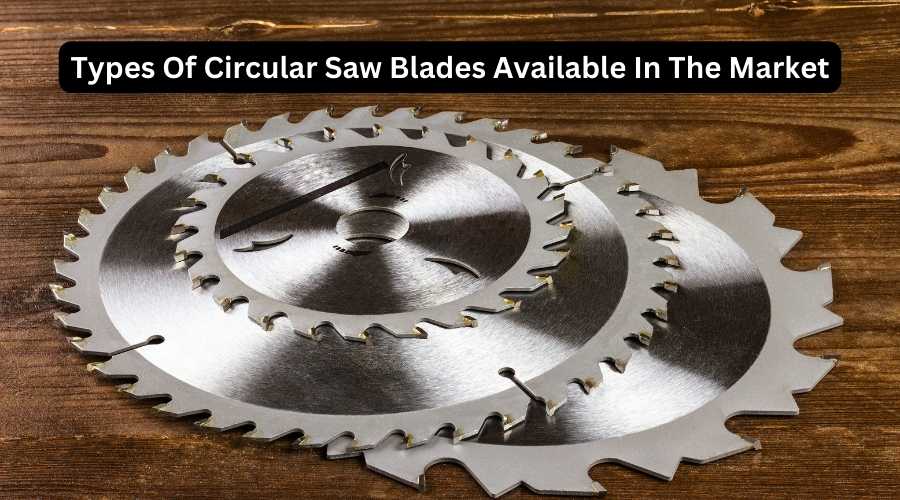
Knowing the different types of circular saw blades can help you choose the best one for your cutting project.
Understanding your circular saw blade is an essential part of effectively using your saw. By knowing the parts of a saw blade, how to measure it, and the different types available, you can choose the right blade for your cutting needs and achieve the best results.
Benefits And Risks Of Using A Smaller Blade
Are you wondering if you can use a smaller blade on your circular saw? Well, the answer is yes, you can. However, before you do, you must know the benefits and risks of using a smaller blade.
Pros Of Using A Smaller Blade
Using a smaller blade on your circular saw has several advantages. Here are the key benefits:
- Superior cut quality: Smaller blades have less runout, which can result in smoother cuts. This is especially noticeable when cutting hardwoods or other materials that are prone to tear-out.
- Increased speed: One of the most significant advantages of using a smaller blade is the increased speed it offers. With a smaller blade, your saw can spin faster, leading to quicker and cleaner cuts.
- Reduced noise and vibration: Smaller blades generate less noise and vibration than larger blades. This can make them more comfortable to use for extended periods of time.
- Increased precision: Smaller blades can be more precise for making delicate cuts. This is because they have a smaller kerf (width of cut), which can help to reduce waste and improve accuracy.
- Extended blade life: Smaller blades can last longer than larger blades because they have less mass to wear down. This can save you money in the long run.
- Reduced material waste: Smaller blades produce a narrower kerf, which means less material is wasted. This can be a significant advantage when cutting expensive materials.
Here are some specific examples of when you might want to use a smaller blade on a circular saw:
- Cutting dados or grooves
- Making intricate cuts
- Cutting delicate materials
- Reducing noise and vibration
- Extending blade life
Cons Of Using A Smaller Blade
Despite the many advantages of using a smaller blade, there are also some potential risks you should be aware of. Here are the main drawbacks:
- Reduced cutting depth: A smaller blade cannot cut as deep as a larger one, so if you need to cut thicker materials, you may need to make several passes, which can be both time-consuming and tedious.
- Increased risk of overheating: Smaller blades can overheat more easily than larger blades. This is because they have less mass to absorb heat. If a smaller blade is used for extended periods of time, it can become damaged.
- Reduced power: Smaller blades have less power than larger blades. This means that they may not be able to cut through as tough of material.
- Increased risk of kickback: Smaller blades can be more prone to kickback than larger blades. This is because they have less mass to resist the force of the cut. Kickback can be a dangerous phenomenon that can cause serious injury.
- Reduced durability: Smaller blades wear out faster than larger blades, reducing their lifespan. This means you may need to replace them more often.
- Reduced efficiency: As previously mentioned, a smaller blade spins faster, leading to quicker cuts. However, this also means that the blade gets hotter more quickly, reducing its overall efficiency.
In general, it is best to use the size of blade that is specified for your circular saw. This will help to ensure safe operation and prevent damage to the saw. However, if you are aware of the limitations of using smaller blades, you may be able to use them safely and effectively.
If you are considering using a smaller blade on your circular saw, it is important to consult the saw’s owner’s manual to see if it is permissible. Additionally, you should take extra precautions to ensure safety, such as wearing proper eye protection and using a push stick to keep your hands away from the blade.
Factors To Consider Before Using A Smaller Blade
When it comes to circular saws, the size of the blade you use can make all the difference to the quality of the cut achieved. While using a smaller blade than recommended may seem like a good idea in theory, it can have a significant impact on the effectiveness of your saw.
Before making any decisions on which blade to use, consider the following factors:
Material Being Cut
Different materials require different blade sizes and types to get the desired results. Keep in mind that if you are using a smaller blade to cut certain materials, it may cause resistance and produce less-than-ideal results. Here are some materials to keep in mind:
- Plywood: 7-1/4 inch to 8-1/4 inch saw blade is recommended.
- Softwood: A 6-1/2 inch to 8-1/4 inch saw blade is perfect.
- Hardwood: 10 inches or larger blade works best.
- Metal: A 7-1/4 inch blade is adequate for thin metal; however, you must use a specific blade for cutting thicker metal.
Blade RPM Compatibility
To make the most of a smaller blade, you must ensure the rpm rating of the blade is compatible with your saw. Choose a blade with a similar rpm to your saw to achieve excellent results. You can find rpm ranges for circular saws on the tool plate or in the owner’s manual.
Saw Safety Features
It is crucial to ensure that your saw is equipped with all necessary safety features, regardless of the blade size you are using. Some critical safety features to check for include:
- Blade guard: Ensure that the blade guard is present and in good condition.
- Sufficient power: Ensure the saw has enough power to work with the blade size you have chosen.
- Comfortable grip: A comfortable grip is essential to maintaining steady control over the saw and blade.
Blade Teeth Count And Size
Teeth count is equally important, whether using a regular or a smaller blade. Smaller blades have fewer teeth and require more time to cut the material. The blade’s tooth size should be selected based on the materials you are cutting. Here are some suggestions:
- Small teeth count: great for cutting wood.
- Large teeth count: great for cutting plastic and metal.
- Alternating teeth: ideal for composite materials.
A smaller blade can be useful in particular circumstances, but you must always ensure that you consider all factors before making a decision. With the above tips, you are now well equipped to make an informed decision.
Keep in mind that using a smaller blade can have performance implications, but with knowledge of the material you are cutting, rpm compatibility, safety features, and blade teeth, you can safely use a smaller blade with confidence.
Steps For Changing Your Saw Blade
Are you wondering if you can use a smaller blade on your circular saw? The answer is it depends on your specific saw model and the job you are performing. However, if you’re looking to replace your circular saw blade, here are some steps to get you started.
Choosing The Replacement Blade
The first step to changing your saw blade is to choose the replacement blade. When choosing the replacement blade, consider the job you will be performing. Here are a few things to keep in mind:
- Blade diameter: Ensure you select a blade that matches the diameter of your saw.
- Blade type: Select a blade that is appropriate for the job you will be doing. For instance, a rip blade is perfect for ripping boards, while a crosscut blade is the best for cutting across the wood grain.
- Blade teeth: The number of teeth on a blade determines how fine the cut will be. More teeth result in a smoother cut.
Getting The Right Tools
The next step is to assemble the required tools for the task. Here’s what you need:
- Wrench or hex key: Required to loosen the blade securing bolt.
- Blade clamp: You need this tool to secure the blade from spinning while loosening the blade bolt.
- Replacement blade: You’ll need the new blade, of course.
Removing The Old Blade
Now that you have a replacement blade and the necessary tools, it’s time to remove the old blade. Here are the steps:
- Unplug the saw from the power source.
- Loosen the bolt holding the blade in position using a wrench or hex key.
- Press the blade clamp to lock the blade in place firmly.
- Remove the old blade from the saw by sliding it off the blade spindle.
Installing The New Blade
Finally, it’s time to install the new blade. Here are the steps:
- Ensure the teeth of the new blade are pointed in the direction of the saw’s rotation.
- Slide the new blade onto the blade spindle, ensuring the bolt hole is aligned with the saw’s arbor.
- Screw in the bolt by hand, tightening it as much as possible.
- Use the wrench or hex key to tighten the blade bolt firmly to the saw’s arbor.
Changing your saw blade is a quick and easy process once you have all the tools you need. Follow these steps, and you’ll be done in no time.
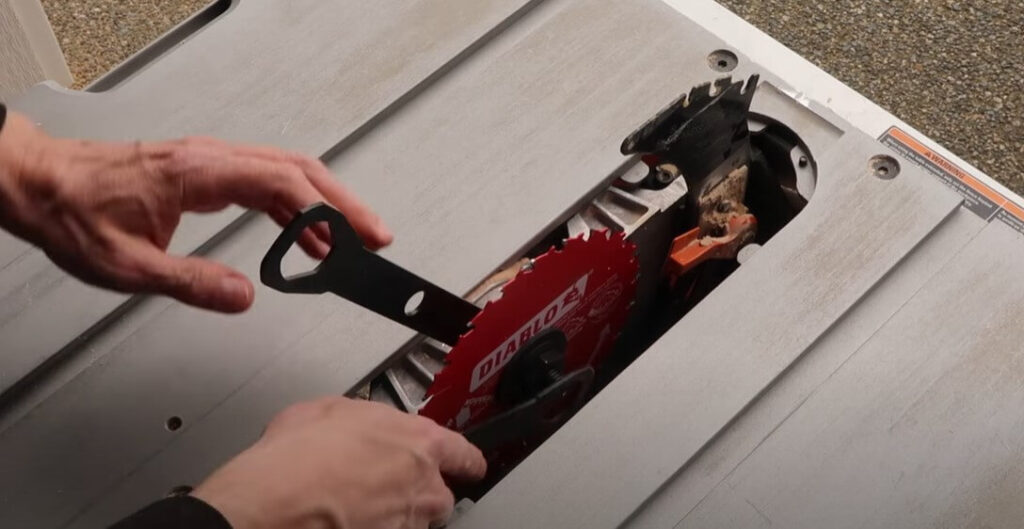
Tips For Using A Smaller Blade On Your Circular Saw
Circular saws are versatile and useful power tools that can make quick and efficient cuts through many types of materials. One question you might have as a DIYer is whether you can use a smaller blade on your circular saw to get some specific cutting jobs done.
If you are looking to get started with smaller blades on your circular saw, there are a few key tips you should be aware of.
Maintaining The Correct Blade Tension
One of the most important aspects of using a smaller blade on your circular saw is ensuring that it maintains the correct blade tension.
Follow these steps to keep it in check.
- Loosen the bolt that holds the saw blade in place to remove the blade.
- Place the smaller blade onto the saw, making sure there is no space between the blade and the holder.
- Adjust the tension so that the new blade won’t wobble.
- Tighten the bolt to secure the blade in place.
Adjusting The Saw’s Cutting Depth
When using a smaller blade on your circular saw, it is essential to adjust the saw’s cutting depth properly.
- Make sure the saw is unplugged before adjusting the cutting depth.
- Locate the depth adjustment lever or knob and adjust it according to the thickness of the material you are cutting.
- Check the depth of the blade, which is visible on the blade guard.
- Make sure the blade doesn’t extend more than ¼ inch below the material you are cutting.
Keeping The Saw Plate Aligned
Using a smaller blade on your circular saw also requires you to ensure that the saw plate is aligned.
- Loosen the saw’s base plate lock.
- Ensure the saw’s blade lines up with the saw’s base plate.
- Adjust the saw’s base plate to align the blade with the plate.
- Tighten the plate lock.
By following these tips, you can use a smaller blade on your circular saw efficiently and adequately. Remember that it is important to be safe while working with power tools. Always wear safety glasses, ear protection, and a dust mask, and keep your work area free of debris.
Good luck with your cutting!
Common Issues You Can Encounter While Using A Smaller Blade
Using a smaller blade on a circular saw might seem like a convenient alternative to working with a bigger blade. However, it comes with its own set of problems that can affect both the quality of your cuts and the safety of your project.
In this section, we will look at the most common issues encountered when using a smaller blade on a circular saw, and how to avoid them.
Overheating
When using a smaller blade on a circular saw, overheating can be one of the most common issues. This happens because the blade is spinning faster due to its smaller circumference, making it generate more heat. Overheating both affects the blade life and its performance, leading to warped or damaged blades.
To avoid overheating:
- Choose a blade suitable for the material you are cutting.
- Keep your blade sharp, blunt blades generate more heat.
- Make sure you are using the appropriate blade for the type of saw you have.
- Pay attention to the saw’s motor, if it’s straining or struggling, then it’s time to stop cutting and allow it to rest.
Kickback
Kickback refers to the sudden, backward movement of a saw caused by an error during cutting. Using a smaller blade on a circular saw increases the chances of a saw’s kickback because it has less surface area touching the material being cut.
Kickbacks can be dangerous, and they can cause serious injuries if appropriate precautions are not taken.
To avoid kickback:
- Always ensure that your hands are away from the blade when you are cutting.
- Make sure your workpiece is well secured.
- Ensure you are holding the saw correctly.
- Use the anti-kickback pawls and blade guard that came with the saw.
Inaccurate Cuts
When you use a smaller blade on a circular saw, precise cutting might become a challenge because the blade’s cutting depth gets reduced. This could lead to not only poor quality cuts but also make it difficult to follow an intended cut line.
To avoid inaccurate cuts:
- Adjust the saw so that the blade protrudes only an eighth of an inch below the workbench.
- Double-check the cut’s accuracy with a straight edge or a framing square before you make the cut.
Reduced Blade Life
While you can use a smaller blade on a circular saw, it does come at the expense of the blade’s life. The smaller the blade, the faster it spins, creating more friction causing the blade to wear off at a much faster rate.
So instead of replacing your blades every so often, using a smaller blade will wear out much faster, leading you to incur extra operating costs.
To extend the blade life, you should:
- Ensure that you are using the right blade for the job.
- Only use the saw when it’s absolutely necessary.
- Invest in high-quality blades; they provide longer service life.
By keeping these common issues in mind, you can continue using a smaller blade on a circular saw without compromising on the quality of your work or safety. Remember, following the manufacturer’s instructions and the safety guidelines are key to avoiding these issues.
Can I Use A Bigger Blade On My Circular Saw?
No, you should not use a bigger blade on your circular saw. Using a bigger blade can be dangerous and can damage your saw.
- The blade guard may not properly cover the teeth of the bigger blade, posing a safety hazard.
- The bigger blade may not have enough clearance for chip ejection, which can cause overheating and damage to the saw.
- The bigger blade may not be able to handle the same amount of torque as the smaller blade, which can lead to premature wear and tear.
In addition, using a bigger blade can put more stress on the motor of your circular saw, which can lead to burnout.
If you need to cut through thicker material, you should use a saw that is designed for that purpose. For example, a reciprocating saw or a chainsaw can be used to cut through thick lumber.
It is always important to follow the manufacturer’s instructions when using any power tool. Using the wrong size blade can be dangerous and can void your warranty.
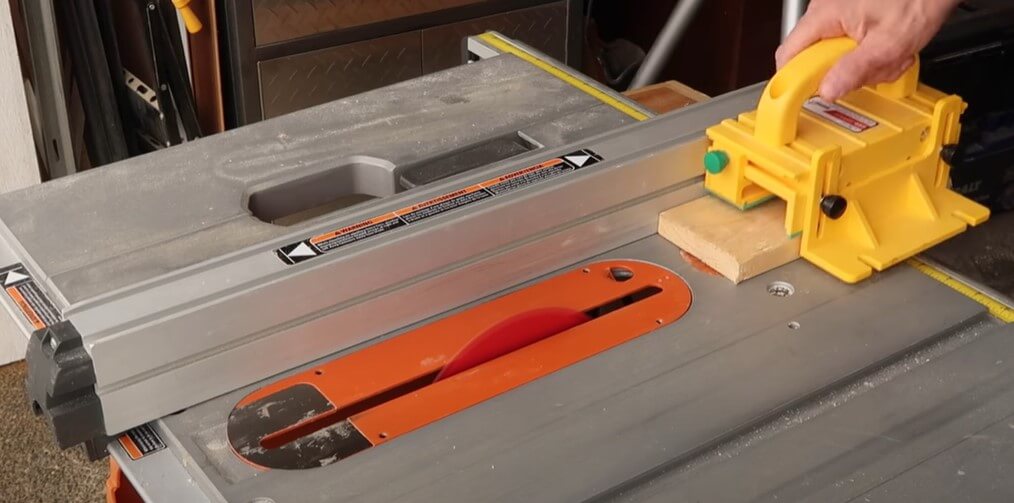
Can I Use A 7 Inch Blade On A 7 1/4 Inch Circular Saw?
Yes, you can use a 7-inch blade on a 7 1/4-inch circular saw. The difference in size is very small and will not affect the performance of the saw. However, it is important to make sure that the arbor hole of the blade is the same size as the arbor of the saw. If the arbor holes are not the same size, the blade will not fit properly on the saw.
In addition, you should make sure that the blade is rated for the type of material you will be cutting. For example, if you are cutting wood, you should use a blade that is specifically designed for cutting wood.
If you are unsure whether or not a particular blade is compatible with your circular saw, you should consult the saw’s owner’s manual. The owner’s manual will list the types of blades that are compatible with the saw.
Overall, using a 7-inch blade on a 7 1/4-inch circular saw is safe and will not damage the saw. However, it is important to make sure that the blade is the correct size and type for the saw.
Can I Use A Smaller Blade On My Miter Saw?
In general, it is not recommended to use a smaller blade on a miter saw than the one specified for the saw. There are a few reasons for this:
- The blade guard may not properly cover the teeth of the smaller blade, posing a safety hazard.
- The smaller blade may not have enough clearance for chip ejection, which can cause overheating and damage to the saw.
- The smaller blade may not be able to handle the same amount of torque as the larger blade, which can lead to premature wear and tear.
However, there are some cases where using a smaller blade on a miter saw may be acceptable. For example, if you are making a very shallow cut, a smaller blade may be able to provide more precision. Additionally, if you are using a dado blade, you may need to use a smaller blade in order to achieve the desired dado width.
If you are considering using a smaller blade on your miter saw, it is important to consult the saw’s owner’s manual to see if it is permissible. Additionally, you should take extra precautions to ensure safety, such as wearing proper eye protection and using a push stick to keep your hands away from the blade.
In general, it is always best to use the size of blade that is specified for your miter saw. This will help to ensure safe operation and prevent damage to the saw.
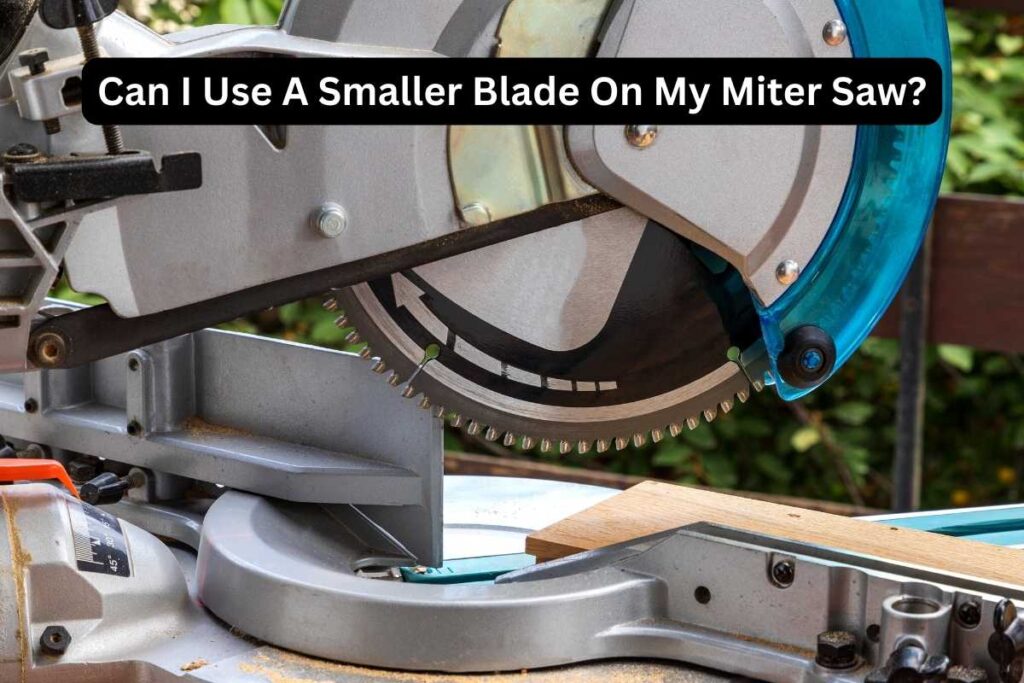
Can You Use A 7 Inch Blade On A 10 Inch Saw?
Yes, you can use a 7-inch blade on a 10-inch saw. The blade guard and riving knife on a 10-inch saw are designed to accommodate blades up to 10 inches in diameter. However, there are a few things to keep in mind when using a smaller blade on a larger saw:
- The smaller blade will not have the same cutting depth as a 10-inch blade. This means that you may not be able to cut through as thick of material.
- The smaller blade may not be as stable as a 10-inch blade. This is because it has less surface area to contact the material being cut.
- The smaller blade may be more prone to vibration. This can make it more difficult to make precise cuts.
If you are aware of these limitations, you can safely use a 7-inch blade on a 10-inch saw. However, if you need to cut through thick material or make precise cuts, it is best to use a 10-inch blade.
In addition, it is important to make sure that the arbor hole of the blade is the same size as the arbor of the saw. If the arbor holes are not the same size, the blade will not fit properly on the saw.
Finally, you should make sure that the blade is rated for the type of material you will be cutting. For example, if you are cutting wood, you should use a blade that is specifically designed for cutting wood.
If you are unsure whether or not a particular blade is compatible with your saw, you should consult the saw’s owner’s manual. The owner’s manual will list the types of blades that are compatible with the saw.
FAQs: Can I Use a Smaller Blade on My Circular Saw?
Can I Use A Blade With A Different Arbor Size?
It is not recommended to use a blade with a different arbor size than your circular saw, as it can be dangerous and affect the quality of the cut. However, you can use an adapter bushing to accommodate a smaller arbor size blade on a larger arbor size saw.
Here are some key points to keep in mind:
- Using an adapter bushing is only recommended for smaller blade sizes.
- Make sure the adapter bushing is securely attached to the blade and saw.
- Always check and follow the manufacturer’s instructions before using an adapter bushing.
Can I Sharpen A Smaller Saw Blade?
Yes, it is possible to sharpen a smaller saw blade, but it requires a specialized saw blade sharpening tool. There are many sharpening tools available in the market that can be used to sharpen a saw blade.
Here are some essentials to keep in mind:
- You can only sharpen a saw blade a few times before the blade needs to be replaced.
- The sharpening tools can be electric or manual.
- Make sure to follow the manufacturer’s instructions on how to sharpen the blade correctly.
What Is The Maximum Cut Depth For A Smaller Blade?
The maximum cut depth for a smaller blade depends on the blade’s diameter size and the saw’s motor. Most smaller blades can cut up to 1-1/2 inches depth, but some can cut up to 2 inches.
Can I Cut Hardwood With A Smaller Blade?
Yes, you can cut hardwood with a smaller blade, but it may take longer and require more passes. Here are some essentials to keep in mind:
- The type and thickness of hardwood you are cutting will affect the blade’s performance.
- Always use a sharp blade for the cleanest cut.
- Make sure your saw and blade are properly adjusted to minimize the risk of kickback.
Can I Use A Smaller Blade On My Circular Saw?
Yes, but keep in mind that it may not be safe or effective for all cuts. A smaller blade has less cutting capacity and can cause kickback or uneven cuts. Check your saw’s manual for guidelines on blade size.
What Size Blade Should I Use On My Circular Saw?
The size of the blade depends on your saw’s capacity and the materials you’re cutting. A larger blade can handle deeper cuts, while a smaller blade is better for precision cuts. Check your saw’s manual for recommended blade sizes.
What Are The Dangers Of Using A Smaller Blade On My Saw?
A smaller blade has less cutting capacity and can cause kickback or uneven cuts, which can be dangerous. It can also put more strain on the motor and shorten the lifespan of the blade and saw.
How Do I Know If My Saw Can Handle A Smaller Blade?
Check your saw’s manual for guidelines on blade size and capacity. If the manual doesn’t mention a smaller blade, it’s best to assume that the saw is designed to work with a specific size and use that size.
Can Using A Smaller Blade Save Me Money?
Using a smaller blade may be cheaper in the short term, but it can cause more damage to the blade and saw in the long run. It can also result in inefficient cuts that waste materials and time. It’s best to use the recommended blade size for the job.
Conclusion
After going through this article, you can now confidently answer the question “Can I use a smaller blade on my circular saw?” Yes, you can, but with a few considerations. First, make sure that the smaller blade is compatible with your circular saw, and that it can still cut through the material you are working on.
Using a smaller blade can also affect the depth of cut, so be sure to adjust it accordingly. While using a smaller blade can have its advantages, such as producing smoother cuts and having less kickback, always prioritize safety by wearing appropriate protective gear.
Overall, the decision to use a smaller blade ultimately depends on the project you are working on and your personal preferences. By taking these factors into account, you can make the best decision to ensure a successful and safe woodworking experience.
Recent Posts
Woodworking in 2025 is all about efficiency, precision, and smart technology. Whether you're a beginner or a seasoned craftsman, having the right tools can make all the difference. Here are the top 7...
Ever tried drilling into a piece of wood only to end up with a splintered mess or a wobbly hole? Yeah, it's more common than you think. Wood might seem like an easy material to work with, but...

